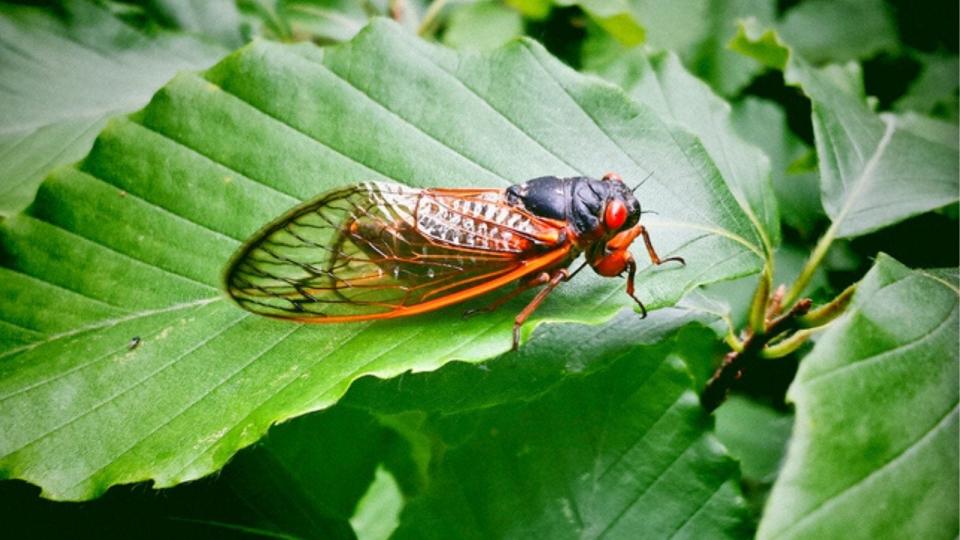Cicadas 2024: 2 broods to emerge together in US for first time in over 200 years
These insects are known for the screaming noise they make and for numbering in the millions.
This year two different groups, or broods, of cicadas will emerge across multiple states with one singular goal: mating and laying millions more eggs.
After 13 years, Brood XIX is set to emerge in the spring of 2024 in 14 states across the Southeast and Midwest, and the 17-year Brood XIII will emerge in five Midwestern states around the same time, according to Cicada Mania. This double emergence is the first time this has happened in 221 years. According to ScienceAlert.com, this won't happen again until 2245.
Of all the states where the broods will emerge this year, they are expected to overlap in Illinois and Indiana.
You may remember the last brood of cicadas, Brood X, which emerged in the summer of 2021 across multiple Eastern, Southern and Midwestern states.
Here's what to know about this year's two cicada broods.

What are Brood XIX cicadas?
Brood XIX (19) is estimated to emerge in these states beginning mid-May and lasting through late June:
Alabama.
Arkansas.
Georgia.
Illinois.
Indiana.
Kentucky.
Louisiana.
Mississippi.
Missouri.
North Carolina.
Oklahoma.
South Carolina.
Tennessee.
Virginia.
The brood last emerged in 2011, and has a 13-year life cycle.
According to Cicada Mania, they will begin to emerge when the soil 8 inches underground reaches 64 degrees, and are often triggered by a warm rain.
What are Brood XIII cicadas?
Brood XIII (13) will emerge these states in mid-May and ending in late June:
Illinois.
Indiana.
Iowa.
Wisconsin.
The brood may also appear in Michigan, Cicada Mania says. Like Brood XIX, they will begin to emerge when the soil 8 inches underground reaches 64 degrees, and are often triggered by a warm rain.
Unlike the other brood, these cicadas have a 17-year life cycle, and last emerged in 2007.
What is the life cycle of a cicada?
Cicadas have the longest life cycle of any insect, waiting 13 or 17 years to emerge, but once they're above ground, things move pretty fast. Female cicadas lay eggs in trees, which drop to the ground and burrow, waiting for years to emerge, depending on their brood.
Once they emerge, adults cicadas will mate, lay millions of eggs and die, all in about five weeks.
What is the difference between annual and periodical cicadas?
There are two types of cicadas that are common in Eastern U.S. states: Annual and periodical cicadas. Annual cicadas emerge every year, while periodical cicadas emerge every 13 or 17 years, according to the U.S. Environmental Protection Agency.
What is a brood?
According to the University of Connecticut, broods are classified as "all periodical cicadas of the same life cycle type that emerge in a given year."
A brood of cicadas is made up of different species of the insect that have separate evolutionary histories. These species may have joined the brood at different times or from different sources. These different species are lumped together under the brood because they are in the same region and emerge on a common schedule.
The two cicada broods set to emerge this summer are both periodical broods, which the University of Connecticut says fits together "like puzzle pieces, in both time and space."
Why do cicadas make so much noise?
You'll have to thank the male cicadas for all that screeching. Male cicadas synchronize their calls and produce congregational songs, according to Britannica, which establish territory and attract females. There is also a courting call that they make before mating.
Unluckily for us, the 13-year and 17-year brood cicadas are the loudest, partially because of the sheer number of them that emerge at once.
Are cicadas harmful to humans or pets?
Cicadas are not harmful to humans, pets, household gardens or crops, the EPA says, and despite their overwhelming numbers, can actually provide a few environmental benefits.
They provide a valuable food source for birds or other predators, can aerate lawns, improve water filtration and add nutrients into the soil as they decompose.
Are cicadas dangerous? Here's what's fact and fiction with cicada bites, stings and more.
Contributing: Joyce Orlando, Nashville Tennessean
This article originally appeared on USA TODAY: Cicadas 2024: Will you see the rare emergence in your state?

